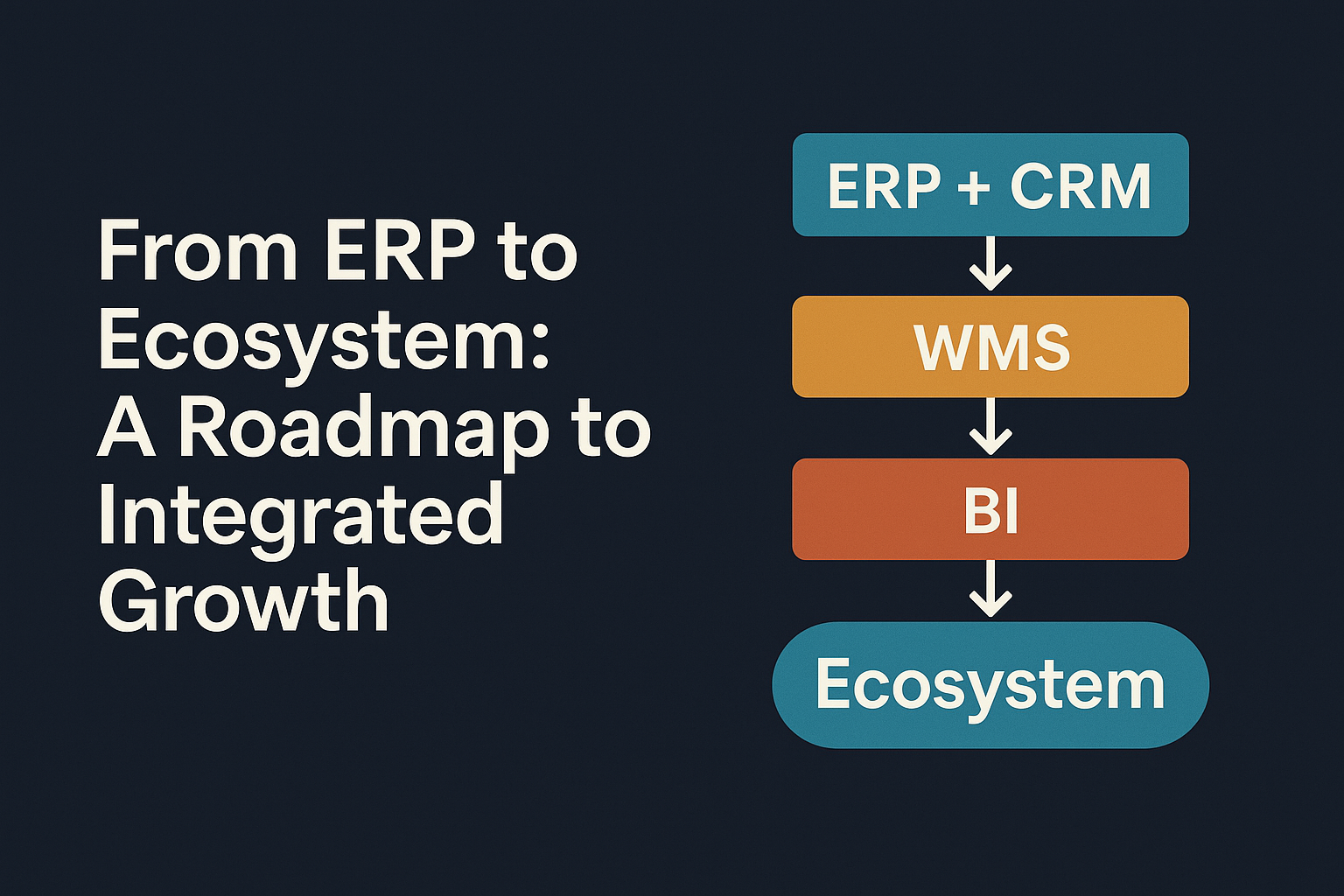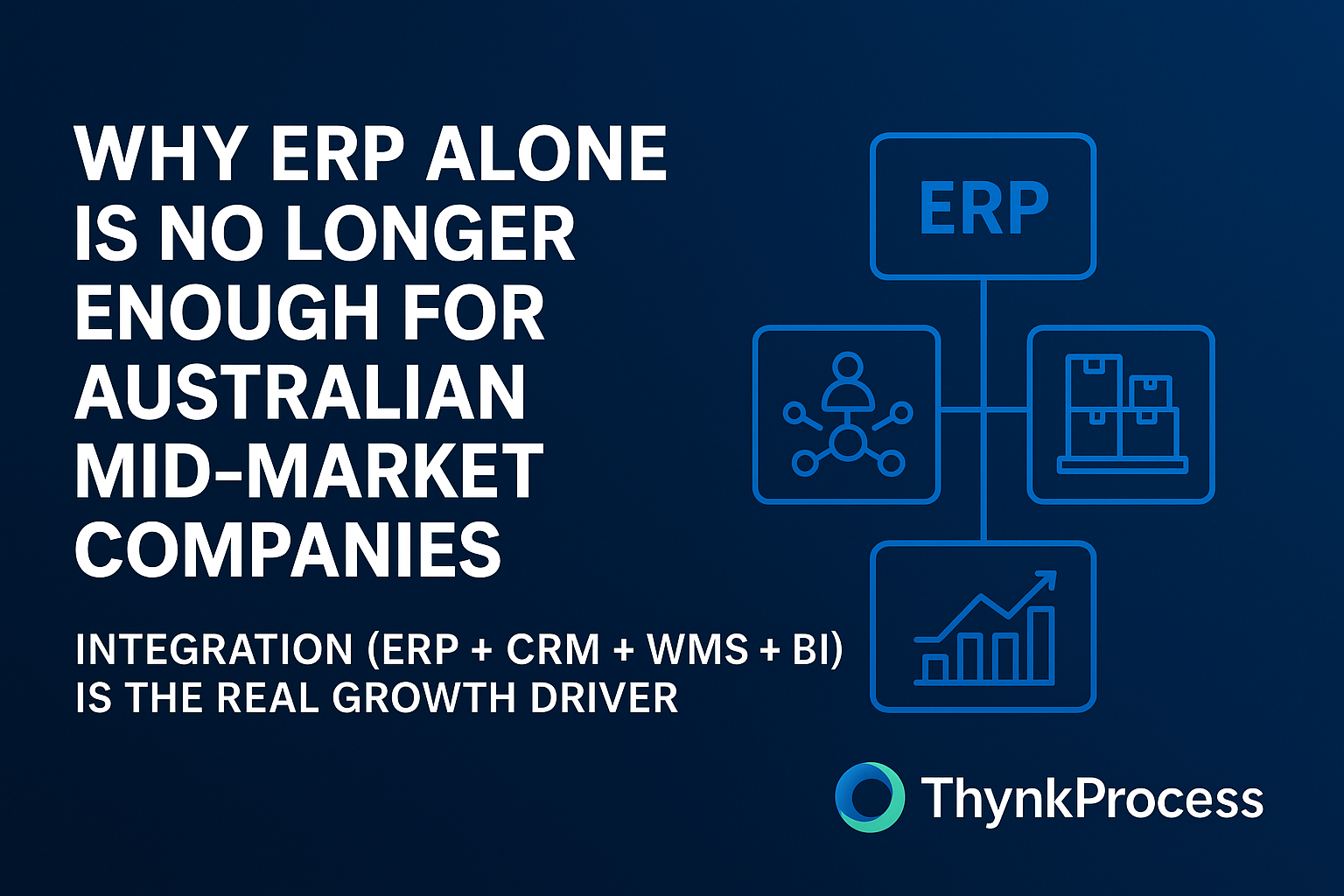Inventory Blind Spots Are Costing Australian Distributors More Than They Realise

The $500 million question every Australian distribution executive should be asking: How much profit are you losing to what you can't see?
While you're focused on the visible challenges—rising input costs that 68% of Australian businesses expect this year, margin pressures from inflation, and customer demands for faster delivery—there's a more insidious problem quietly eroding your bottom line. Inventory blind spots are the invisible profit killers that most Australian distributors don't realise they have, let alone quantify.
These aren't just minor inefficiencies. Research shows that direct and indirect costs of supply chain blind handoffs could total $64-94 billion per year, whilst retailers lose an average of 12% of annual profits due to poorly managed inventory carrying costs. For a mid-market Australian distributor turning over $50 million annually, this could represent $6 million in lost profits—enough to fund significant growth initiatives or weather economic downturns.
The stakes have never been higher. With Australia's supply chain management market projected to grow from $857.2 million in 2024 to $2.1 billion by 2033, those who eliminate these blind spots will capture disproportionate value, whilst those who don't will find themselves increasingly uncompetitive.
The Anatomy of Australia's Inventory Blind Spots
Dead Stock Disguised as Working Capital
Your ERP system shows healthy inventory levels, but dig deeper and you'll likely find a different reality. Dead stock—inventory that hasn't moved in 90+ days—often comprises 15-25% of total inventory in Australian distribution businesses, yet remains largely invisible in standard reporting.
This isn't just about storage costs, though these are climbing significantly. Non-residential property operators have seen a 4.3% rise, driven by industrial rents amid ongoing strong occupier demand for warehouses and distribution centres. The real damage lies in the opportunity cost: capital tied up in slow-moving stock that could be invested in fast-turning products or returned to shareholders.
Consider a typical scenario: A Melbourne-based industrial distributor discovered that $2.8 million of their $12 million inventory hadn't turned in over six months. The carrying costs alone—warehousing, insurance, depreciation, and opportunity cost—represented $840,000 annually. More critically, this capital could have been deployed to stock fast-moving items, potentially generating an additional $1.4 million in gross profit.
The challenge intensifies when you factor in Australia's unique geographic distribution requirements. With major population centres separated by vast distances, many distributors maintain multiple stock locations without unified visibility, creating pockets of dead stock that compound across the network.
Phantom Availability and the Customer Service Paradox
"We show it as available, but we can't ship it." This phrase costs Australian distributors millions in lost sales and customer relationships annually. Phantom availability occurs when systems show inventory as available when it's actually allocated, damaged, mislocated, or tied up in quality holds.
The problem is particularly acute in Australia's competitive distribution landscape, where 42% of Australian retailers say they have adequate contingency plans for supply chain disruptions—meaning 58% are operating with insufficient visibility and backup plans. When customers can't get what they need from you, they quickly find alternative suppliers in a market where switching costs are relatively low.
This blind spot manifests in several ways:
- System allocation lag: Inventory shows as available even after allocation to another order
- Quality holds: Products in quality review limbo that systems still count as sellable
- Physical discrepancies: Misplaced or damaged stock that hasn't been properly adjusted
- Transit inventory: Stock in transit between locations that appears available at the destination
A Perth-based food distributor recently discovered they were losing $180,000 monthly in sales due to phantom availability issues. Their system showed 94% fill rates, but actual shipments achieved only 78% fill rates, forcing customers to split orders across multiple suppliers.
Procurement Blind Spots in Australia's Complex Supply Chain Environment
Australia's geographic isolation and complex import/export environment create unique procurement challenges that generate significant blind spots. With 63% of companies experiencing supply chain disruptions caused by climate-related events in 2025, and ongoing geopolitical tensions affecting global markets, Australian distributors face heightened risks that many aren't adequately measuring or managing.
Traditional procurement approaches assume linear, predictable supply chains. But Australian distributors deal with extended lead times from Asian suppliers, seasonal shipping disruptions in the Pacific, and currency fluctuations that can dramatically impact landed costs. Without real-time visibility into this complex web, procurement decisions often rely on outdated assumptions.
The most costly blind spot here is demand signal distortion. As orders flow through multiple systems—from customer portals to ERP to supplier EDI—the original demand signal becomes obscured. By the time procurement teams see demand patterns, they're often 4-6 weeks old, leading to systematic over or under-buying.
The Australian Context: Why These Problems Hit Harder Down Under
Australian distributors face a unique confluence of pressures that make inventory blind spots particularly damaging:
Margin Compression in a High-Cost Environment: While 68% of Australian businesses expect input costs to rise in 2025, only 52% plan to raise sales prices. This 16-point gap means margins are under severe pressure, making every efficiency gain critical.
Skills Shortage Reality: 62% of industry leaders identify labour shortages as a major short-term challenge. When you can't hire enough skilled warehouse or planning staff, inventory blind spots multiply as manual processes break down and oversight gaps widen.
Regulatory and Compliance Complexity: Australian distributors must navigate an increasingly complex compliance environment, from new sustainability reporting requirements to evolving safety standards. Without integrated systems providing complete visibility, maintaining compliance whilst optimising inventory becomes exponentially more difficult.
Customer Expectations in a Digital-First Economy: Retailers using AI-driven demand forecasting see a 30% reduction in lost sales due to stockouts, yet many Australian distributors still rely on spreadsheet-based planning. As customers demand Amazon-level service, inventory blind spots translate directly to customer defection.
Technology as the Great Illuminator
The pathway to eliminating inventory blind spots isn't about implementing the latest trending technology—it's about creating an integrated ecosystem where data flows seamlessly and insights emerge automatically.
Real-Time Visibility Through Modern WMS Implementation: Advanced warehouse management systems (WMS) provide minute-by-minute visibility into stock levels, enabling companies to thread the needle between competing demands. But implementation must go beyond basic functionality to include exception-based alerts, automated cycle counting, and predictive analytics.
Unified Business Intelligence Across the Supply Chain: Modern BI platforms like Power BI, Tableau, and SAP Analytics Cloud can transform disparate data sources into actionable insights. The key is creating dashboards that highlight exceptions rather than just reporting standard metrics. For instance, alerting when slow-moving inventory crosses critical thresholds, or when phantom availability exceeds acceptable tolerances.
ERP Integration That Actually Integrates: Too many Australian distributors run ERP systems that create rather than eliminate silos. Modern approaches using SAP Business One with manufacturing extensions like beas, integrated with specialised WMS solutions like Produmex, create the end-to-end visibility required to eliminate blind spots systematically.
The Path Forward: Turning Visibility Into Competitive Advantage
Success in eliminating inventory blind spots requires a systematic approach that addresses both technology and process:
Start with the Data Foundation: Before implementing new systems, audit your current data quality. Poor data quality can account for up to 30% of total inventory value if left unchecked. Establish master data governance, standardise SKU management, and implement regular data cleansing processes.
Implement Exception-Based Management: Rather than monitoring everything, focus on systems that identify and alert on exceptions. Set up automated alerts for slow-moving inventory, phantom availability scenarios, and demand pattern changes that signal procurement adjustments.
Create Integrated Planning Processes: Break down the silos between sales forecasting, procurement planning, and warehouse management. Modern S&OP processes supported by integrated technology platforms ensure demand signals reach procurement teams in real-time, not after weeks of delay.
Measure What Matters: Establish KPIs that directly correlate to inventory blind spot costs: inventory turns by category, fill rate accuracy, dead stock percentage, and demand forecast accuracy. Track these metrics at the SKU level, not just in aggregate.
Making the Investment Case
For Australian distribution executives evaluating inventory visibility investments, the ROI calculation is straightforward:
- Immediate Impact: Retailers typically see 25% reduction in labour costs through optimised warehouse layouts and automated processes
- Working Capital Optimisation: Eliminating dead stock and improving turns can free up 10-15% of working capital
- Revenue Protection: Reducing phantom availability can improve actual fill rates by 5-10%, directly protecting revenue and customer relationships
- Cost Avoidance: Preventing overstock situations avoids carrying costs that can reach 25-30% of inventory value annually
Given these metrics, a well planned investment in integrated inventory visibility typically pays for itself within 12-18 months whilst providing ongoing competitive advantages.
Ready to illuminate your inventory blind spots?
At ThynkProcess, we specialise in helping Australian distributors create integrated visibility across their supply chains. Our expertise spans SAP Business One with beas manufacturing extensions, Produmex WMS for supply chain optimisation, Salesforce CRM integration, and comprehensive BI solutions including Power BI, Tableau, and SAP Analytics Cloud.
We understand the unique challenges facing Australian distributors—from managing extended supply chains to navigating complex compliance requirements whilst maintaining competitive margins. Our approach focuses on creating integrated solutions that eliminate blind spots systematically rather than implementing technology for technology's sake.
Contact us today to schedule a complimentary discovery session. Email us at info@thynkprocess.com.au or call (03) 7075 3900 and one of our certified consultants will contact you within 48 hours.
Let's turn your inventory blind spots into competitive advantages that drive sustainable profitable growth in Australia's demanding distribution environment.



.jpeg)
